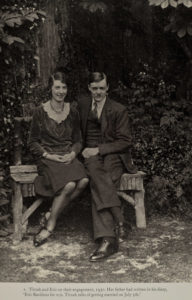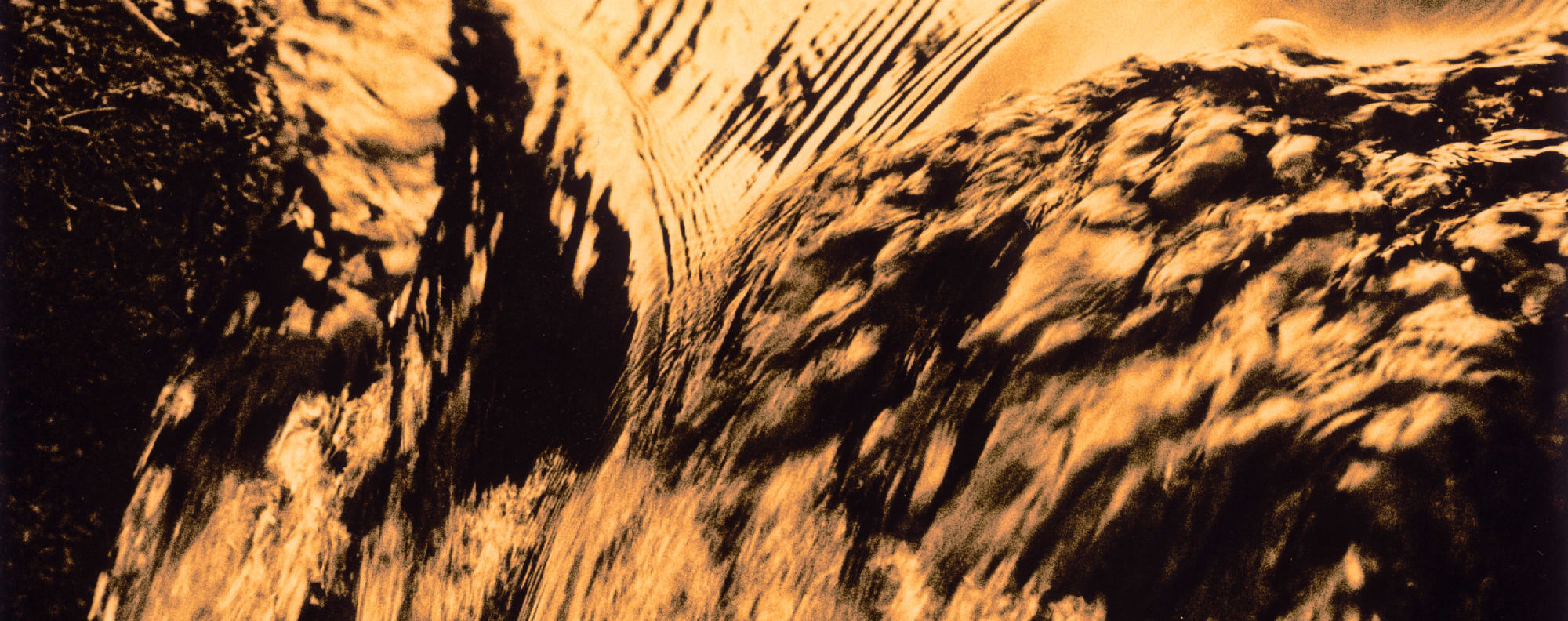
In that same year Tirzah went from Eastbourne to the Central School of Art, staying in Kensington near two aunts, one of whom, a masterful figure dressed in the height of winter fashion, appears in the spirited engraving of Kensington High Street dated 1929. She is about to cross the road followed by a subdued girl carrying an attaché case conspicuously labelled T. G., while in the background an elderly woman shopper is irresistibly attracted by a window display of glamorous twenties evening dresses. This engraving was one of a remarkable series called Relations, Tirzah’s hilarious idea for a calendar commissioned by the perceptive Oliver Simon of the Curwen Press. Other commissions came at this time from the Golden Cockerel Press, the Kynoch Press, for whom Tirzah designed borders and repeat patterns as well as making engravings for illustrations, and from the BBC who invited her to design a new version of the Corporation’s Arms and to illustrate Granville Bantock’s oratorio The Pilgrim’s Progress.
Tirzah’s engravings, collected and arranged in chronological order by her daughter Anne Ullmann, were published in book form by Gordon Fraser in 1987. The assembled images make an unforgettable impression of power and freshness. No telling detail escapes the gimlet, satirical eye of the youthful artist who shows complete command of the medium, using the full range of tools in one of her very first prints, March, which was one of The Four Seasons. A plain, lumpy woman in a fur trimmed coat and feather-bedecked hat with its broad brim blown back uses an umbrella as a walking stick and tugs at a Scottish terrier on a lead as she breasts a high wind and strides across a field where tossing wild daffodils are breaking into flower. The extreme cleanness of the cutting, the variation in tone achieved by means of little jabs with a small scorper and with the sensitive use of the tint tool and graver and the bold contrasts of light and dark are typical of Tirzah’s engraving and become more marked as her work progresses. March also introduces the dominant theme of Tirzah’s most personal cuts, the comfortable middle class background of her upbringing.
The short skirts, bobbed hair, pudding basin hats, flat bosoms and belts below the hips, the furniture, fittings and wallpapers of the period are celebrated with enjoyable gusto, often derisive, in these precise engravings. Some of the more memorable among them record fleeting gestures or momentary happenings which no one else would have thought of attempting in so exacting and rigorous a medium. In Yawning, which has already been mentioned and with which Tirzah must have been pleased, for she did a needlework picture of the same composition, a girl yawns and stretches as she prepares for bed; the same girl slides reluctantly from the crumpled sheets on a winter morning, feeling with her toe for a slipper; a young bather wobbling on the shoulders of an older girl standing breast high in the sea is about to lose her balance and fall into the water; the tense participants in a session of table turning and the affrighted onlookers are seen on the brink of some awful revelation.
